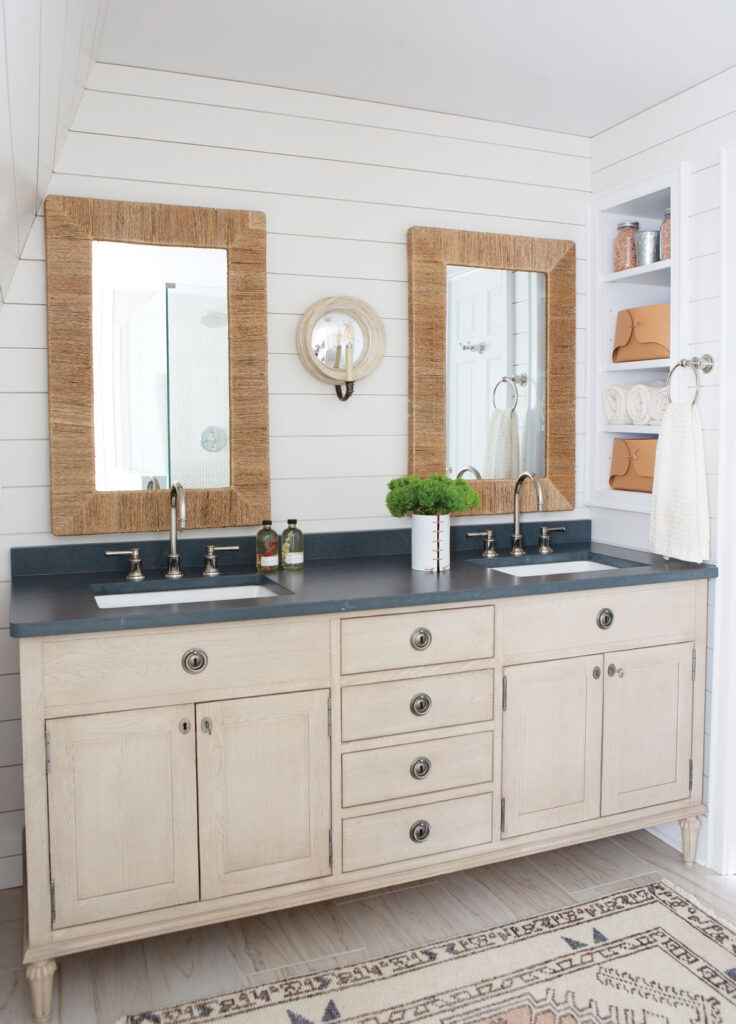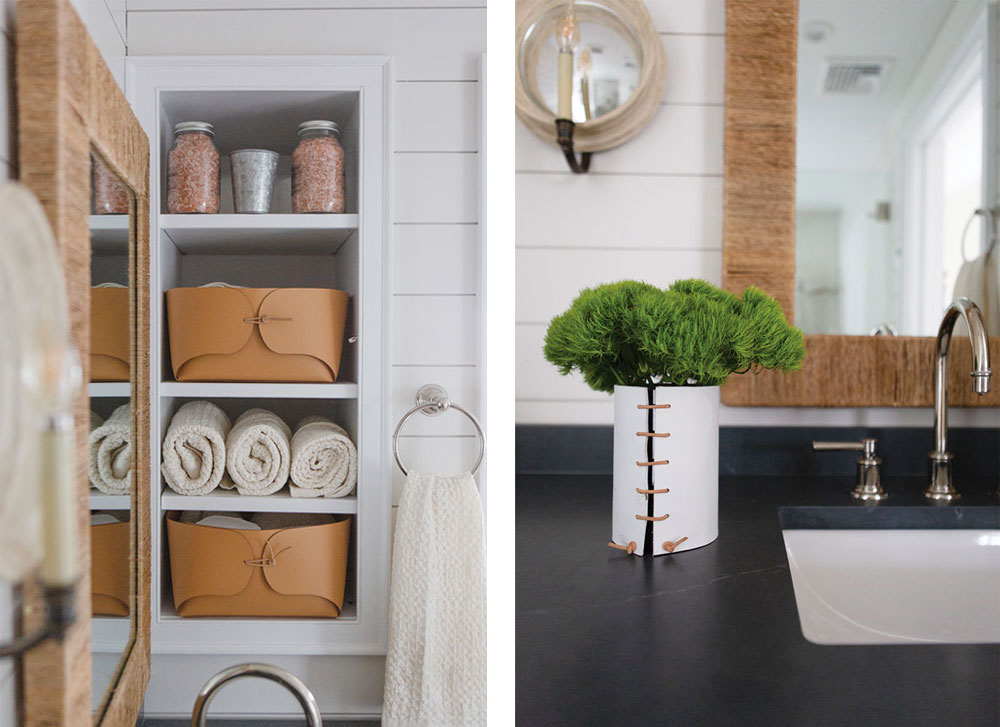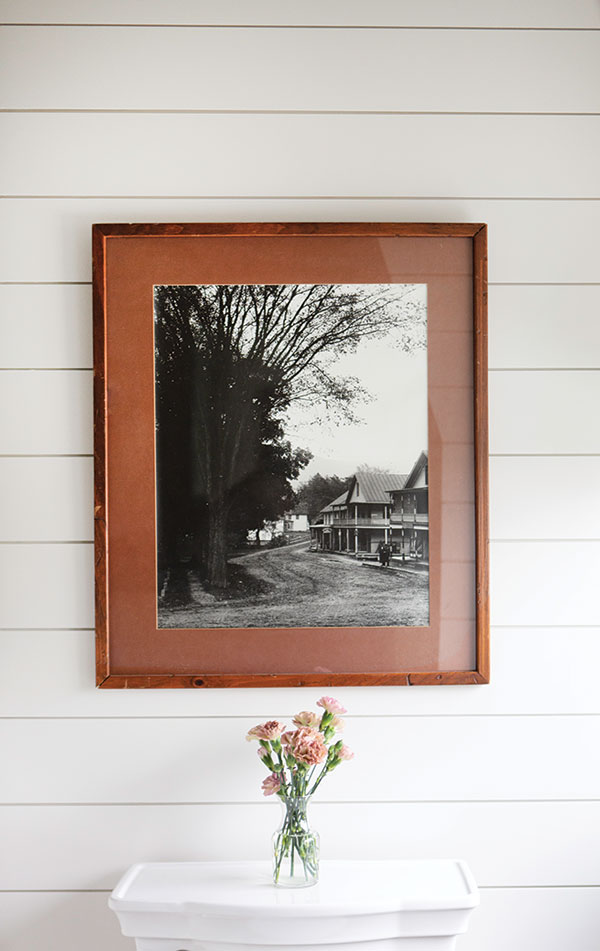Farmhouse Fresh
Writer Meg Fox | Photographer Melissa Mellor | Designer Kara Vacca | Location Pennington, NJA compact bath makeover takes big cues from its Pennington property

The new bath “has a simplistic white and creamy base that is seen in the tile and wall materials,” says designer Kara Vacca. The classic vanity’s weathered wood finish is topped with contrasting honed Silestone quartz countertops in charcoal; a material that resembles soapstone with farmhouse appeal. Visible in the mirror’s reflection is a roomy glass-enclosed shower covered in penny tiles.
Bonnie and Randy Vey have graced their quaint farmhouse in Pennington with several home improvements since purchasing it in 1992. But the tired, barely functional master bath — original to the home built in 1986 —became one of those projects placed on the back burner. “Bathroom renovations can be evasive,” Bonnie Vey explains. “It was always something we wanted to do, but never pulled the trigger on” until more recently, when they became empty nesters.
Enter designer Kara Vacca, principal of Kara Theresa LLC in Monmouth County. “My clients live in a farmhouse with endless charm and history….I wanted the master bath to be a reflection of the rest of the home…fresh, timeless and with natural elements.”
The original space—at approximately 70-square-feet—consisted of an oversized tub, no shower and one sink, which could not accommodate the two of them, recalls Vacca. Early discussions focused on whether to combine the space with an adjacent hallway bath to create one large master bath. Vacca’s strategy to work within the existing footprint—and ditch the tub—was the answer. “The slanted ceilings were the biggest challenge” when reworking the layout, recalls Vacca. But, utilizing the space more efficiently created room for everything they needed: a sleek—and more accessible—glass-enclosed shower, a double vanity with increased storage capacity and “gorgeous fittings and fixtures for a much-needed overhaul,” she says.
Aside from knowing how to maximize function, “Kara had an innate sense of what would feel right in the space,” Vey says. All while “maintaining the character and integrity of the rest of the home, which is so important in a remodel.” The weathered light oak vanity has classic roots and its honed Silestone quartz top resembles soapstone, for that “farmhouse kind of feel,” she says. Shiplap walls—painted in a soft gray tone—add a layer of texture, but keep things “clean and simple,” adds Vacca.
Heated porcelain tile floors “are a joy to have,” and bring another level of comfort to the bath, the homeowner says. So does the penny tile in the shower, which also “feels great” underfoot. Among the takeaways is how much you can achieve in a small space with a little ingenuity and vision. Says Vey: “It doesn’t have to be a big bathroom that will give you what you need….I wish I did it sooner!”


